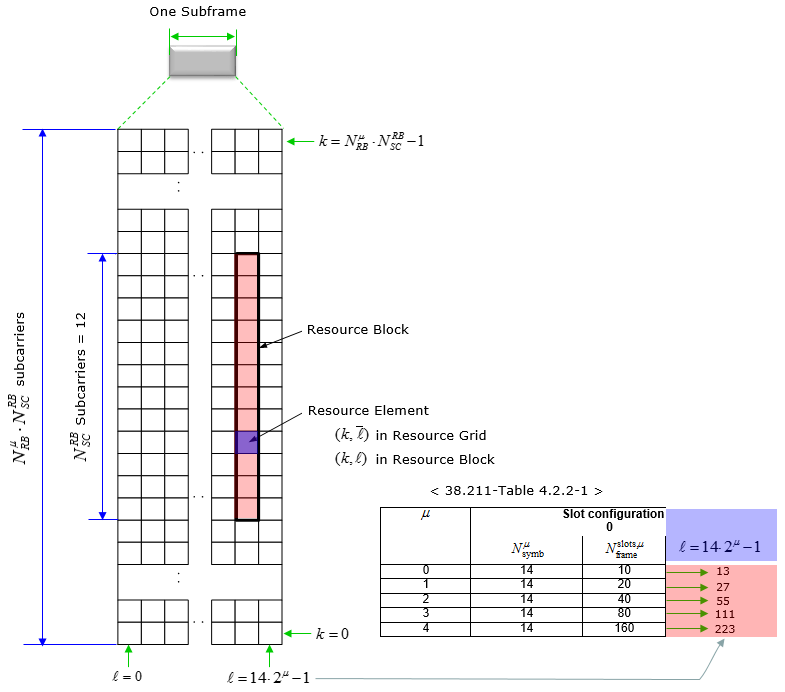|
Resource Grid
The resource grid for NR is defined as follows. If you just take a look at the picture, you would think it is almost identical to LTE resource grid. But the physical dimmension (i.e, subcarrier spacing, number of OFDM symbols within a radio frame) varies in NR depending on numerology.

Resource Element : This is same as LTE. It is the smallest unit of the resource grid made up of one subcarrier in frequency domain and one OFDM symbol in time domain.
Resource Block: In NR, Resource Block is defined only for frequency domain. 38.211-4.4.4.1 states 'A resource block is defined as 12(N_RB_sc) consecutive subcarriers in the frequency domain'.
Time domain definition of resource block is a little bit ambiguous. Minimum time domain length in a resource block can be one OFDM symbol, but exact time domain length vary depending SLIV.
Resource Grid and Antenna port and Numerology : Basically one resource grid is created for one antenna port and numerology. 38.211-4.2.2 states as follows.
- There is one set of resource grids per transmission direction (uplink or downlink) with the subscript set to DL and UL for downlink and uplink
- There is one resource grid for a given antenna port p , subcarrier spacing configuration u, and transmission direction (downlink or uplink).
The maximum and minimum number of Resource blocks for downlink and uplink is defined as below (this is different from LTE)
< 38.211 Table 4.4.2-1: Minimum and maximum number of resource blocks.>

Following is the table that I converted the downlink portions of Table 4.4.2-1 into frequency Bandwidth just to give you the idea on what is the maximum RF bandwidth that a UE / gNB need to support for single carrier.
|
u
|
min RB
|
Max RB
|
sub carrier spacing
(kHz)
|
Freq BW min
(MHz)
|
Freq BW max
(MHz)
|
|
0
|
24
|
275
|
15
|
4.32
|
49.5
|
|
1
|
24
|
275
|
30
|
8.64
|
99
|
|
2
|
24
|
275
|
60
|
17.28
|
198
|
|
3
|
24
|
275
|
120
|
34.56
|
396
|
|
4
|
24
|
138
|
240
|
69.12
|
397.44
|
Reference
[1]
|

